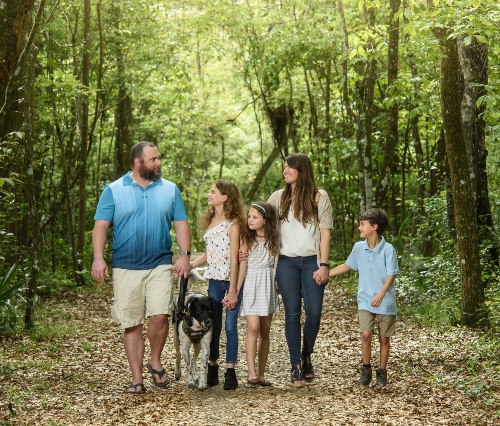The Secondary Trauma of PTSD in Veteran Families and Caregivers

PTSD is a mental health condition that can happen to anyone who has experienced a traumatic event. Those dealing with PTSD have triggers, which can be linked to situational or emotional experiences and memories from a traumatic event. But the effects aren’t always limited to those directly impacted by the traumatic event.
“The challenges stemming from PTSD are not only experienced by the warrior,” said Lt. Col. (Ret.) Michael Richardson, WWP vice president of independence services and mental health. “When a wounded warrior is coping with PTSD, the ones who love them sometimes struggle the most.”
Families of veterans managing PTSD experience secondary trauma symptoms — or indirect trauma — very similar to what warriors face: anxiety, depression, irritation, social isolation, and more.
According to WWP’s mental health team, sometimes the symptoms warriors display in dealing with PTSD become so pronounced that they tax the family and create added dysfunction. For instance, injured veterans may lose interest in family activities, leaving family members feeling abandoned. In addition, the risk of physical and emotional violence is higher in families where one of its members has PTSD. So, family members may feel extra stressed trying to meet the veteran’s needs while not having their own needs met. This can cycle into the family’s sense of helplessness and depression.
To elude an injured veteran’s episode or behavioral breakdown, family members may begin compensatory behaviors, WWP’s mental health team explained. For instance, if a warrior deals with PTSD triggers through avoidance, family members may learn the same habits, isolating themselves in life as well. To cope, the family member may form additional unhealthy coping mechanisms, such as eating too much or not enough, self-medicating, anger, and even violence. This projected downward spiral — between the warrior and his or her loved ones — then leads to the entire family having difficulty communicating, trusting, and feeling safe. (Learn 10 tips to help warriors cope with PTSD.)
WWP believes that increased awareness can bring more attention to not only warriors coping with PTSD but also those families who are facing secondary trauma. With education, treatment becomes an option.
“As a nation, we must raise awareness and highlight the services and resources available for not only wounded warriors, but also the families facing the reality of PTSD in their daily lives,” Michael said. “With education, those suffering in silence can learn that treatment is an option.”
Click here to learn more about PTSD and mental health services and resources available to wounded warriors and their families.
Contact: Vesta M. Anderson — Public Relations, vanderson@woundedwarriorproject.org, 904.570.0771
About Wounded Warrior Project
Since 2003, Wounded Warrior Project® (WWP) has been meeting the growing needs of warriors, their families, and caregivers — helping them achieve their highest ambition. Learn more.